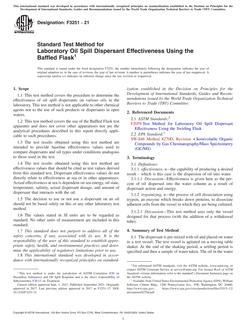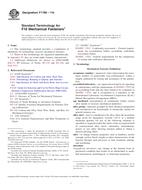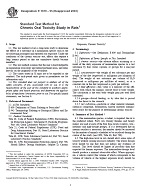1.1 These test methods cover the fracture toughness, KIc, determination of advanced ceramics at ambient temperature. The methods determine KIpb (precracked beam test specimen), KIsc (surface crack in flexure), and KIvb (chevron-notched beam test specimen). The fracture toughness values are determined using beam test specimens with a sharp crack. The crack is either a straight-through crack formed via bridge flexure (pb), or a semi-elliptical surface crack formed via Knoop indentation (sc), or it is formed and propagated in a chevron notch (vb), as shown in Fig. 1.
Note 1 – The terms bend(ing) and flexure are synonymous in these test methods.
1.2 These test methods are applicable to materials with either flat or with rising R-curves. Differences in test procedure and analysis may cause the values from each test method to be different. For many materials, such as the silicon nitride Standard Reference Material 2100, the three methods give identical results at room temperature in ambient air.
1.3 The fracture toughness values for a material can be functions of environment, test rate and temperature. These test methods give fracture toughness values for specific conditions of environment, test rate and temperature.
1.4 These test methods are intended primarily for use with advanced ceramics which are macroscopically homogeneous. Certain whisker- or particle-reinforced ceramics may also meet the macroscopic behavior assumptions. Single crystals may also be tested.
1.5 This standard begins with a main body that provides information on fracture toughness testing in general. It is followed by annexes and appendices with specific information for the particular test methods.
| Main Body | Section |
| Scope | 1 |
| Referenced Documents | 2 |
| Terminology (including definitions, orientation and symbols) | 3 |
| Summary of Test Methods | 4 |
| Significance and Use | 5 |
| Interferences | 6 |
| Apparatus | 7 |
| Test Specimen Configurations, Dimensions and Preparations | 8 |
| General Procedures | 9 |
| Report (including reporting tables) | 11 |
| Precision and Bias | 12 |
| Keywords | 13 |
| Summary of Changes | |
| Annexes | |
| Test Fixture Geometries | A1 |
| Procedures and Special Requirements for Precracked Beam Method | A2 |
| Procedures and Special Requirements for Surface Crack in Flexure Method | A3 |
| Procedures and Special Requirements for Chevron Notch Flexure Method | A4 |
| Appendices | |
| Precrack Characterization, Surface Crack in Flexure Method | X1 |
| Complications in Interpreting Surface Crack in Flexure Precracks | X2 |
| Alternative Precracking Procedure, Surface Crack in Flexure Method | X3 |
| Chamfer Correction Factors, Surface Crack in Flexure Method Only | X4 |
| Crack Orientation | X5 |
1.6 Values expressed in these test methods are in accordance with the International System of Units (SI) and Practice E 380.
1.7 The values stated in SI units are to be regarded as standard. No other units of measurement are included in this standard.
1.8 This standard does not purport to address all of the safety concerns, if any, associated with its use. It is the responsibility of the user of this standard to establish appropriate safety and health practices and determine the applicability of regulatory limitations prior to use.

Note – The figures on the right show the test specimen cross sections and crack types. Four-point loading may be used with all three methods. Three-point may be used with the pb and vb specimens.
FIG. 1 The Three Test Methods
Product Details
- Published:
- 05/01/2009
- Number of Pages:
- 32
- File Size:
- 1 file , 910 KB
- Redline File Size:
- 2 files , 1.7 MB


